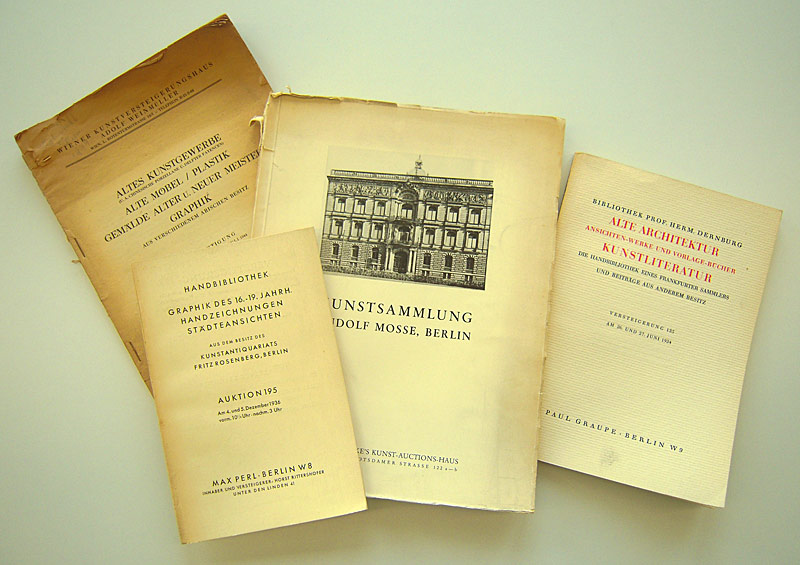Provenance Research
Provenance research investigates the ownership of individual works of art. It examines the biography of objects with the primary goal of reconstructing a full chronology of all owners. As a component of scientific inventory, this branch of research is traditionally a part of a museum’s mission. For example, it plays an important role in revising inventory and oeuvre catalogues.
For the past several years, provenance research has increasingly investigated the fate of works of art during the Third Reich. In December 1999, the Federal Government of Germany along with individual German states and three metropolitan umbrella organizations adopted a joint declaration to find and return Nazi-confiscated art, especially from Jewish property. In accordance with the so-called Washington principles from the year before, German collections and their legal representatives are required to examine the exact provenance of their holdings, disclose any illegal origins, and provide restitution. The Kunstverein in Bremen has also taken on this obligation.
Further Links
Lost Art Database Magdeburg
German Lost Art Foundation
Arbeitskreis Provenienzforschung

Provenance Research at the Kunsthalle Bremen
Since December 2010, the systematic examination of the Kunsthalle Bremen's collection for works of art seized as a result of Nazi persecution has been funded by the German Lost Art Foundation in Magdeburg as part of several temporary projects.
For three years, a research project was carried out on works in the collection which were purchased by Bremen collectors Arnold Blome (1894–1972), Heinrich Glosemeyer (1896–1969), and Dr Hugo Oelze (1892–1967). The results were presented to the public in the winter of 2014-2015 in the exhibition A Question of Origin: Three Bremen Collectors and the Journey of Their Collections During National Socialism. In addition to biographies of the three relatively unknown collectors, the extensive catalogue documents the labyrinthine paths their works of art took from their creation in the studio to the Kunsthalle collection.
Directly following this, all the paintings in the Kunsthalle Bremen were examined until April 2017 in another research project in order to clarify the urgent issue of whether they include works that were confiscated during the Nazi period. There are 614 paintings that were created prior to 1945 and became a part of the Kunsthalle collection after 1933. The research results are available in the online catalogue.
Currently, the Kunsthalle is facing the challenge of also checking the provenance of the works on paper. In order to be able to deal with this large collection in a meaningful way, the long-term research project in the Kupferstichkabinett, which began in June 2022, is concentrating on two particularly problematic groups, namely the 81 French drawings acquired during the Nazi era and the 276 French works whose provenance after 1945 is completely unknown. After the end of the project in 2024, the research results will be published in the online catalogue and some of them will also be presented in an exhibition.
Download von Pressebildern mit besonderen Nutzungsbedingungen
Die von Ihnen angefragten Abbildungen unterliegen besonderen Nutzungsbedingungen und dürfen nur zur aktuellen redaktionellen und themengebundenen Berichterstattung unter Angabe der Bildcredits verwendet werden. Die Bilder dürfen nicht beschnitten und es darf kein Text o.ä. über die Bilder gelegt werden. Online dürfen die Bilder nur in einer Auflösung von 72dpi veröffentlicht werden. Die genauen Nutzungsbedingungen werden zusammen mit den Bildern heruntergeladen. Im Falle einer Veröffentlichung erklären Sie sich mit diesen Bedingungen einverstanden.
Für den Download benötigen Sie ein Passwort. Falls Sie noch keine Zugangsdaten besitzen, können Sie diese hier per Mail anfragen.
Vielen Dank für Ihre Anmeldung
Wir haben Ihren Mitgliedsantrag für den Kunstverein in Bremen erhalten. Vielen Dank! Den Mitgliedsausweis/die Mitgliedsausweise senden wir Ihnen innerhalb von 10 Tagen zu.
Ihr Kunstverein in Bremen
OK

